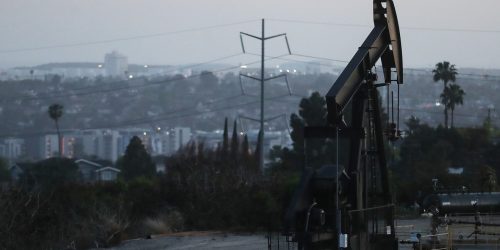nergy-producing nations have “weathered the COVID-19 demand devastation storm and non-compliance [with output cuts] should become the end-of-summer theme for OPEC+,” said Moya.
On Monday, West Texas Intermediate crude for August CLQ20, -0.09% was down 13 cents, or 0.3%, at $40.49 a barrel on the New York Mercantile Exchange, after posting a weekly gain of 5% on Thursday, with U.S. markets closed for Independence Day on Friday.
Global benchmark Brent oil for September BRNU20, -0.04% rose 38 cents, or 0.9%, at $43.18 a barrel on ICE Futures Europe.
U.S. markets have been contending with growing cases of COVID-19, with the U.S. adding more than 49,000 new cases on Sunday, according to data compiled by Johns Hopkins University. Cases in the U.S. account for about a quarter of the global total of more than 11.4 million infections.
But assets considered risky also have seen an uptrend, partly on the back of hope that China, one of the biggest importers of crude globally, can continue to show progress from emerging from the viral pandemic.
Over in the U.S., a federal judge on Monday ordered the shutdown of the Dakota Access pipeline and said it must be emptied within 30 days, until a more extensive environmental review is completed, according to court documents. The 1,172-mile underground pipeline, which has been in operation since June 2017 and can transport 570,000 barrels of oil per day, runs beneath the Missouri River, north of the Standing Rock Indian Reservation.
“While the pipeline closure may be a win for environmentalists and the Standing Rock Sioux tribe, it is another blow to the U.S. shale patch that has already been hit hard from the COVID-19 virus and a historic drop in demand,” said Phil Flynn, senior market analyst at The Price Futures Group.
Last week, markets were supported by data from the Energy Information Administration, which reported Wednesday that U.S. crude inventories fell by 7.2 million barrels for the week ended June 26, coming after three consecutive weeks of increases. Analysts polled by S&P Global Platts had forecast an average crude supply decline of 2.7 million barrels.
On Nymex Monday, August gasoline RBQ20, -1.39% fell by 1.3% to $1.2431 a gallon, while August heating oil HOQ20, +1.06% tacking on 1.3% to $1.2472 a gallon.
Meanwhile, Duke Energy Corp. DUK, -2.63% and Dominion Energy D, -9.94% said that they were abandoning plans to build a $8 billion natural-gas pipeline in West Virginia and North Caroline, with Dominion agreeing to unload natural-gas assets to Warren Buffett’s Berkshire Hathaway BRK.A, +2.53% BRK.B, +2.21% for a total of $9.7 billion, including debt.
“If completed, the pipeline would have brought gas from the most prolific gas shale region —which also has some of the lowest breakeven costs—to the broader market, likely pressuring Henry Hub [gas] prices,” said Robbie Fraser, senior commodity analyst at Schneider Electric, in a daily note.
August natural gas NGQ20, +5.36% was trading 5.3 cents, or 3.1%, higher at $1.787 per million British thermal units on Monday, after putting in a weekly gain of 12% on Thursday.





